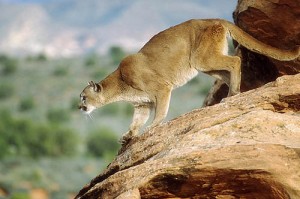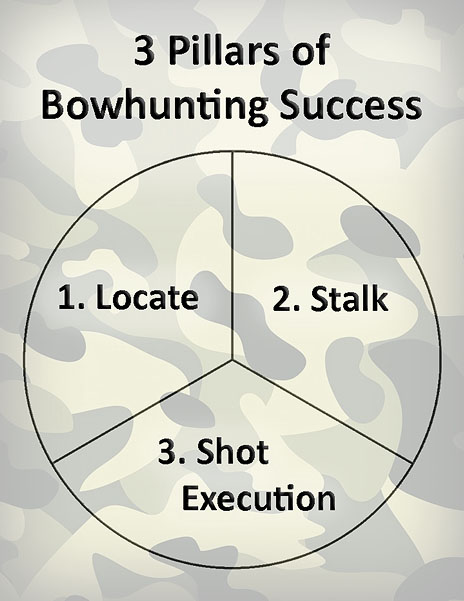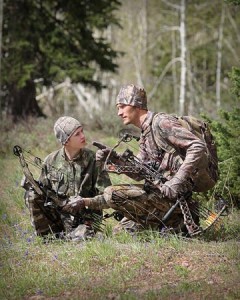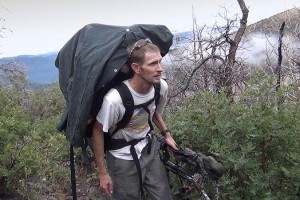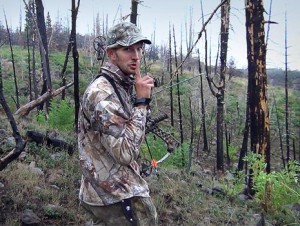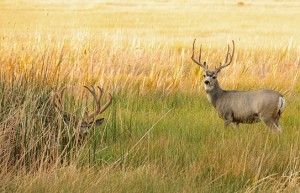Ambush vs. Still-hunting vs. Spot-and-Stalk
Ambushing
Because of the extreme wariness of big bucks, ambush hunting is the most effective style of bowhunting. In close-quarters situations, whoever moves first–you or the deer–is at a disadvantage.

In very thick brush or noisy terrain, ambush hunting might be your only option. This is why so many whitetail hunters sit tree stands. For mule deer, however, hunting from tree stands or ground blinds is only minimally effective because mule deer are so unpredictable. Therefore, ambush hunting is most effective only after you‘ve patterned a buck and are able to sit near prime feed or trails without being detected.
Ambush hunting is also a great option for novice hunters who haven’t mastered extreme stealth yet. It’s also a good technique in desert areas like Southern Arizona where sitting water is a viable option.
Still-Hunting
Still-hunting is the second most effective hunting method. Still-hunting is where you move very slowly through the woods while stopping frequently to glass and listen for movement. Still-hunting takes a lot of practice to master.
When still-hunting you must vary your approach speed as terrain changes. Whenever you come to a rise or break from heavy cover, stop and glass ahead. While still-hunting, try to keep to the shadows as much as possible since deer have a hard time seeing into shadows.

The goal of still-hunting is to be non-existent. That means hunting against the wind while remaining perfectly silent. Different ground conditions will dictate the speed that you can travel. Still-hunting works best on soft dirt or wet substrates. When the ground is dry and crunchy, try to step on large rocks, logs or soft dirt patches whenever possible. If you continue to get busted while still-hunting, revert back to ambush hunting.
Spot and Stalk
Spot-and-stalking is where you glass up an animal at a distance and then implement a strategy to stalk close. Spot-and-stalk works best in more open terrain where you’re able to sit and glass for unsuspecting animals that move between cover.

A successful spot-and-stalk strategy means planning the best approach based on wind and cover. In most cases the terrain will look differently as you close in on the animal. So it’s best to pick out prominent landmarks along the way, like a large boulder or dead tree. When covering very long distances it can also be helpful to take a reference picture before stalking just in case you get turned around.
Personal Preference
Ultimately the hunting style you choose depends on specific hunting conditions, terrain, and the method you’re most comfortable with.
Maybe I’m just impatient, but I prefer still-hunting over ambushing. I really like the freedom to move around and cover lots of ground. The majority of my trophies were taken while still-hunting, but in most cases I was lucky to either see or hear the deer before it saw me. It also helps to have thousands of hours practice.
Most of the time I will incorporate a hybrid-style of hunting that alternates between ambush and still-hunting. Basically I still-hunt around prime areas, and if I encounter a likely travel route I’ll plant my butt in the shadows and sit ambush for longer periods of time .
Although most of my bowhunting takes place areas too thick for long-range glassing, I still rely on spot-and-stalk techniques when the occasion arises.


